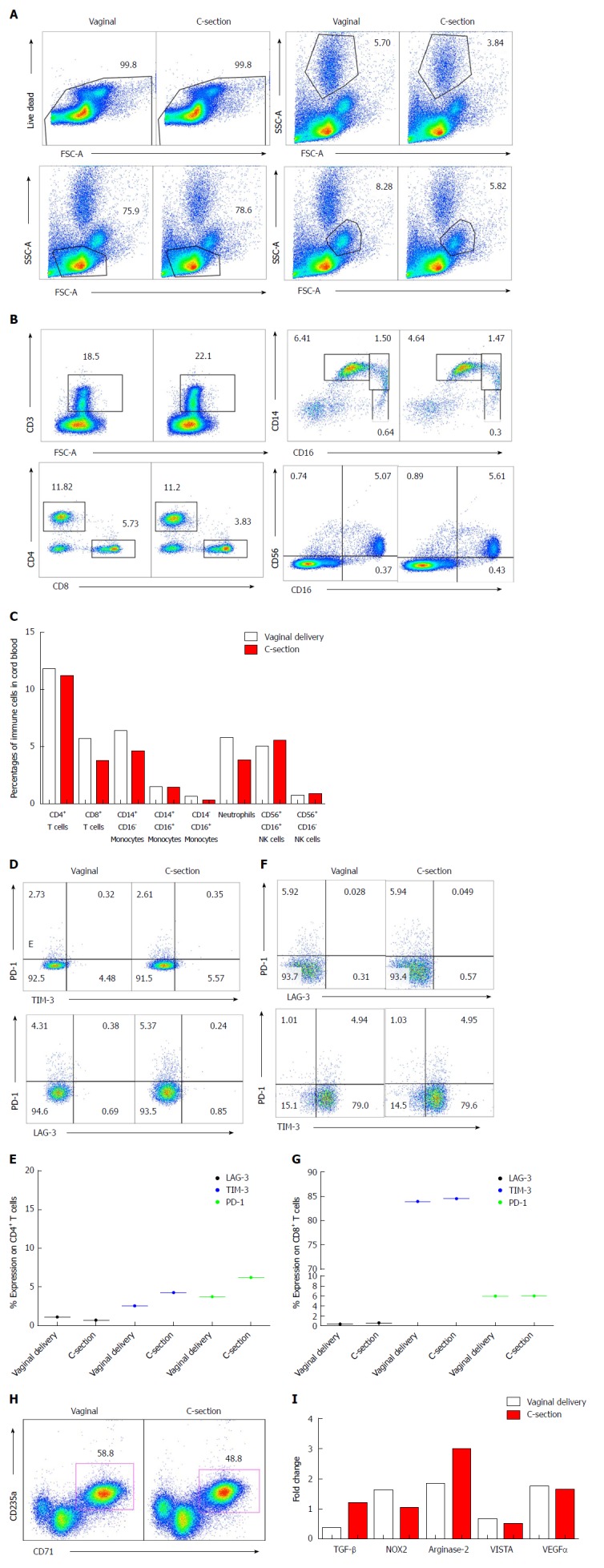Figure 1.

Immunophenotyping of cord blood cells. A: Showing flow cytometry gating strategy for different immune cells in cord blood. B: Representative dot plots showing T cells (CD3, CD4 and CD8), monocytes (CD14 and CD16) and NK cells (CD56 and CD16) in cord blood of vaginally or C-section delivered newborns. C: Cumulative data showing percentages of different immune cells in cord blood. D: Representative dot plots showing expression of PD-1/LAG-3 and PD-1/TIM-3 on CD4+ T cells. E: Percentages of PD-1, LAG-3 and TIM-3 on CD4+ T cells from cord blood of twins. F: Representative dot plots showing expression of PD-1/LAG-3 and PD-1/TIM-3 on CD8+ T cells. G: Percentages of PD-1, LAG-3 and TIM-3 on CD8+ T cells from cord blood of twins. H: Representative dot plots showing percentages of CD71+CD235+ cells in cord blood of vaginally vs C-section delivered twins. I: qPCR data showing fold gene expression for TGF-β, NOX2, arginase-2, VISTA and VEGFα in enriched CD71+ erythroid cells from cord blood. NK: Natural killer; C-section: Caesarean section; PD-1: Program death-1; LAG-3: Lymphocyte-activation gene 3; TIM-3: T-cell immunoglobulin and mucin-domain containing-3; qPCR: Quantitative polymerase chain reaction; TGF-β: Transforming growth factor beta; NOX-2: The phagocyte NADPH oxidase; VISTA: V-domain Ig suppressor of T cell activation; VEGFα: Vascular endothelial growth factor A.
